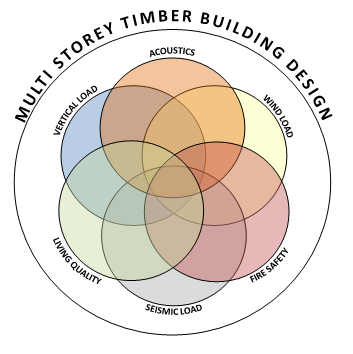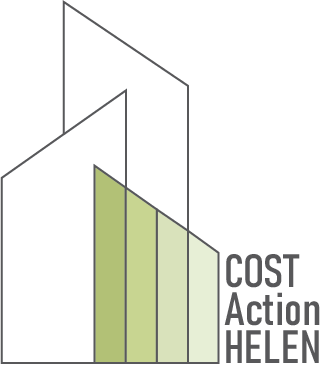Summary
In COST Action CA20139 “Holistic design of taller timber buildings – HELEN” we are working towards optimized holistic approaches to improve the performance of taller timber buildings and to widen their competitiveness and use across the EU and rest of the world.
Find out more about our objectives and mission here!
With the worldwide construction sector being responsible for one third of carbon dioxide emissions, as well as forty percent of the world’s energy use and waste production, a shift to sustainable and renewable construction techniques is crucial. Engineered timber, champion of the sustainable construction materials, has evolved to a stage that enables the construction of not only family housing, but also taller buildings commonly built from concrete or steel. We are working on tackling the challenges related to the, design of taller buildings made from timber.
The design of taller timber buildings should be performed with intensive collaboration among the design team members (e.g. architects, structural, fire, acoustic engineers etc.). We are addressing taller multi-storey timber buildings from a collaborative and interdisciplinary perspective, considering static, dynamic, fire, acoustic, human health and other aspects in parallel and not in isolation. Through interdisciplinary analysis and interaction, we want to develop holistic design guidelines that will enable safe construction of taller timber buildings, as well as respect human wellbeing demands. This Action aims to achieve that through intense interdisciplinary work and interaction between different design backgrounds, as well as between academic and design professionals.
Find out more about COST here and join us!

Mission
Our key objectives are to:
- Coordinate, compare and bring together results of related research with the aim of defining optimized holistic approaches to improve the performance of taller timber buildings and widen their use across the EU and rest of the world.
- Identify and address regulatory, governance, financial and legal drivers and barriers for a wider implementation and use of taller timber buildings.
- Suggest new design approaches, processes and technologies that can build and improve upon existing best practices and ensure optimal holistic design of taller timber buildings.
With the COST Action we:
- Contribute to human resources training in new technologies on taller timber buildings within the international framework to create an open network of knowledge and professionals with differentiated skills, with particular attention to Inclusiveness Target Countries (ITCs) and Early Career Investigators (ECIs) and with an emphasis on gender equality.
- Organise meetings for Early Career Investigators (ECIs) and PhD students to acquire transferable skills such as grant writing, communication, and time-management as well as encouragement of direct collaboration among ECIs.
- Foster frequent exchanges and short-term scientific stays of research group members from ECIs in top European research centres to help increase their visibility and capacity.
- Accelerate knowledge transfer from fundamental research to industrial application and increase the success rate in future proposals by addressing taller timber building market barriers, identifying suitable pilots, and connecting with existing R&D projects dealing with the topic of multi-storey timber design at both national and international levels.
- Promote interdisciplinary work streams using the synergies between the participating groups for an efficient exchange of knowledge by taking advantage of different COST tools.
- The Action acts as a stakeholder platform to identify the needs and requirements from different fields and points of view through a bottom-up approach (from society, through industry, businesses, clusters, researchers and academia, to policy makers).
- Develop novel approaches by combining different technologies through interdisciplinary and transdisciplinary collaboration of different fields and widen the field of knowledge within each working group by incorporating a joint research approach.
